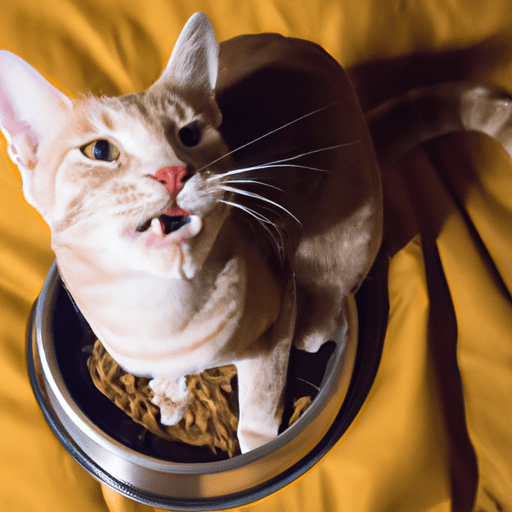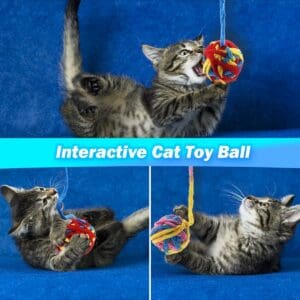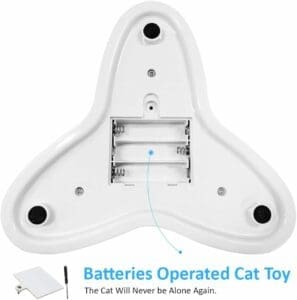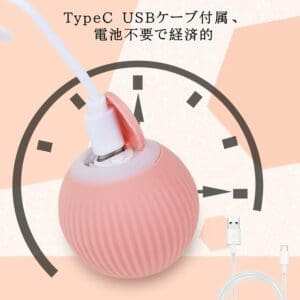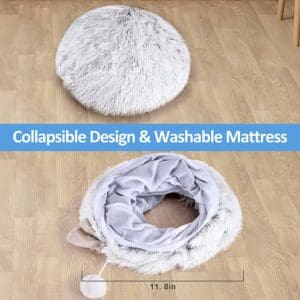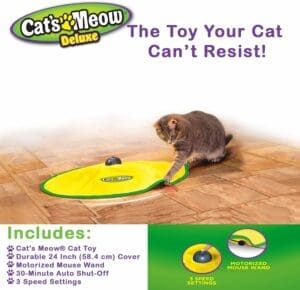Choosing the perfect cat food for your beloved furry friend can be a daunting task, with so many options available in the market. It’s important to ensure that you’re providing your cat with a balanced and nutritious diet that meets their specific dietary needs. This article will guide you through the process of selecting the ideal cat food, taking into consideration factors such as age, breed, and any special dietary requirements your cat may have. With this knowledge, you’ll be well-equipped to make an informed decision that will keep your feline companion happy and healthy.
Understanding Your Cat’s Nutritional Needs
Recognizing the different life stages of cats
As a cat owner, it’s important to understand that your furry friend’s nutritional needs will vary depending on their life stage. Cats go through three main life stages: kitten, adult, and senior. During each stage, they require different levels of nutrients to support their growth, maintenance, and overall health. By recognizing the specific life stage of your cat, you can ensure that their diet meets their unique nutritional requirements.
Understanding the nutritional requirements of cats
Cats are obligate carnivores, which means they require a diet that is primarily composed of animal-based protein. Protein is crucial for the growth and repair of their muscles, organs, and tissues. Additionally, cats need a balance of fats, carbohydrates, vitamins, and minerals to support their energy levels, immune system, and overall wellbeing. Understanding the importance of these essential nutrients will help you make informed decisions when selecting cat food.
Identifying any specific dietary needs of your cat
Just like humans, cats may have specific dietary needs or sensitivities. Some cats may require a special diet due to health conditions such as kidney disease, diabetes, or allergies. Others may have a preference for certain flavors or textures. By observing your cat’s behavior, consulting with your veterinarian, and monitoring their response to different foods, you can identify any specific dietary needs your cat may have and select the appropriate cat food to meet those needs.
Reading and Understanding Cat Food Labels
Decoding the ingredient list
When it comes to choosing the right cat food, it’s crucial to understand how to read and interpret cat food labels. The ingredient list provides valuable information about the composition of the food. Look for high-quality animal proteins, such as chicken or fish, listed as the main ingredients. Avoid cat foods that contain fillers, by-products, and artificial additives. By decoding the ingredient list, you can ensure that you’re providing your cat with a nutritious and balanced diet.
Analyzing the nutritional information
In addition to the ingredient list, the nutritional information panel on cat food labels provides essential details about the food’s content. Pay attention to the levels of protein, fat, carbohydrates, and fiber. Consult the guidelines provided by the Association of American Feed Control Officials (AAFCO) to ensure that the cat food meets the minimum nutritional requirements for your cat’s life stage. Analyzing the nutritional information will help you determine if the cat food is suitable for your cat’s specific needs.
Identifying any potential allergens or sensitivities
Just like humans, cats can develop allergies or sensitivities to certain ingredients. Common allergens for cats include grains like wheat, corn, and soy. By carefully reviewing the ingredient list and nutritional information, you can identify any potential allergens or ingredients that may not agree with your cat’s digestive system. If you notice any adverse reactions or symptoms after feeding your cat a particular food, consult with your veterinarian to determine if an allergy or sensitivity is the cause.
Different Types of Cat Food Available
Dry cat food (kibble)
Dry cat food, also known as kibble, is a popular and convenient option for many cat owners. It is easy to store, has a long shelf life, and can help support dental health by promoting chewing. However, it’s important to ensure that the dry cat food you choose is nutritionally balanced and contains high-quality ingredients. Some cats may prefer the crunchiness of dry food, while others may not find it as appealing.
Wet cat food (canned)
Wet cat food, often referred to as canned food, is another common option for cat owners. It has a higher water content compared to dry food, which helps promote hydration in cats who may not drink enough water. Wet cat food is also typically more palatable and may be preferred by picky eaters or cats with dental issues. When selecting canned food, look for varieties that contain high-quality proteins and minimal fillers or artificial additives.
Semi-moist cat food
Semi-moist cat food is a less common type of cat food that has a texture between dry and wet food. It is usually packaged in small, individually wrapped portions, making it convenient for portion control. However, it may contain higher levels of preservatives and artificial additives compared to other types of cat food, so it’s important to read the labels carefully and choose a reputable brand.
Raw or homemade cat food
Raw or homemade cat food is a controversial option that involves feeding your cat a diet of fresh, uncooked meats, organs, and bones, or preparing homemade meals using recipes specifically formulated for cats. While some cat owners believe that a raw or homemade diet mimics a cat’s natural diet and improves their overall health, it’s important to note that it can be challenging to ensure the diet is nutritionally balanced and meets all of your cat’s nutritional needs. Consult with a veterinary professional before embarking on a raw or homemade cat food diet to ensure it is safe and appropriate for your cat.
Specialty diets for specific health conditions
In some cases, cats may require specialty diets to manage specific health conditions. For example, cats with kidney disease may benefit from a diet that is low in phosphorus and protein. Cats with urinary tract issues may require a diet that promotes urinary health. If your cat has a specific health condition, consult with your veterinarian to determine if a specialty diet is necessary and which type of cat food best suits their needs.
Determining the Quality of Cat Food
Checking for Association of American Feed Control Officials (AAFCO) approval
When selecting cat food, it’s important to choose a brand that meets the standards set by the Association of American Feed Control Officials (AAFCO). The AAFCO approval ensures that the cat food has undergone feeding trials or meets the required nutrient levels for a specific life stage. Look for the AAFCO statement on the cat food packaging to ensure that you’re providing a quality product to your cat.
Researching the pet food company’s reputation
Not all pet food companies are created equal, and it’s essential to research the reputation and history of the brand you’re considering. Look for companies that have a long-standing presence in the industry and a track record of producing high-quality, safe, and nutritious cat food. Read customer reviews, consult online forums, and seek recommendations from other cat owners to get a better understanding of the company’s reputation.
Consulting veterinary professionals for recommendations
One of the best resources for determining the quality of cat food is your veterinarian. They have in-depth knowledge of your cat’s health needs and can recommend brands that are suitable for your cat’s specific requirements. Veterinary professionals can also provide guidance on selecting cat food based on factors such as age, activity level, and any specific health conditions. Consulting with your veterinarian ensures that you’re making informed decisions when it comes to your cat’s diet.
Considering Your Cat’s Age and Health
Choosing appropriate cat food for kittens
Kittens have specific nutritional needs to support their rapid growth and development. They require a diet that is rich in high-quality protein, essential fatty acids, vitamins, and minerals. When selecting cat food for kittens, look for options that are labeled specifically for this life stage. These formulations are designed to provide the optimal balance of nutrients for growing kittens.
Selecting cat food for adult cats
Once your cat reaches adulthood, their nutritional needs change. Adult cat food should provide the necessary nutrients to support their maintenance and overall wellness. Look for cat food labeled as “adult” or suitable for “all life stages.” These formulations often have the right balance of protein, fats, carbohydrates, vitamins, and minerals that adult cats need.
Opting for senior cat food for older cats
As cats age, they may require adjustments to their diet to address age-related issues such as joint health, weight management, and reduced immune function. Senior cat food is specifically formulated to address these needs. It typically contains lower calorie content, higher fiber to aid digestion, and supplements to support joint health and cognitive function. Transitioning to a senior cat food when your cat reaches around seven years of age can help promote their overall health and wellbeing.
Special considerations for cats with health issues
If your cat has a specific health condition, such as diabetes, food allergies, or kidney disease, their dietary needs may be different from a healthy cat. It’s crucial to work closely with your veterinarian to determine the most appropriate cat food for managing their condition. They may recommend prescription diets or specific formulations that can help support your cat’s health and manage their specific health condition.
Understanding the Importance of Essential Nutrients
Protein
Protein is a vital nutrient for cats as they require higher levels compared to other animals. It is essential for muscle development, tissue repair, and immune system function. Look for cat food that contains high-quality animal proteins, such as chicken, turkey, or fish, listed as the main ingredients. Adequate protein intake is essential for your cat’s overall health and wellbeing.
Fats
Fats are a concentrated source of energy for cats and provide essential fatty acids. They help support healthy skin and coat, promote proper brain function, and aid in the absorption of fat-soluble vitamins. Look for cat food that contains healthy sources of fats, such as chicken fat or fish oil. However, it’s important to ensure that the fat content in your cat’s diet is within a healthy range to prevent obesity.
Carbohydrates
While cats are primarily meat eaters, they can still benefit from a small amount of carbohydrates in their diet. Carbohydrates provide a source of energy and can help with digestion and bowel regularity. However, it’s important to choose cat foods that contain high-quality carbohydrates, such as whole grains or vegetables, rather than fillers or low-quality sources. Moderation is key when it comes to carbohydrate intake for cats.
Vitamins and minerals
Vitamins and minerals play a crucial role in maintaining your cat’s overall health and supporting various bodily functions. Look for cat food that contains a wide range of vitamins and minerals, including vitamin A, vitamin D, calcium, phosphorus, and taurine. These nutrients are essential for your cat’s vision, bone health, immune function, and more. A well-balanced diet will provide the necessary vitamins and minerals for your cat’s optimal health.
Hydration and water content
Cats have low thirst drive, which means they often do not drink enough water to stay properly hydrated. This is where wet cat food can be beneficial, as it has a higher water content compared to dry food. Adequate hydration is essential for kidney health, urinary tract function, and overall wellbeing. If you choose to feed your cat dry food, ensure that fresh water is always available for them to drink.
Avoiding Harmful Ingredients and Fillers
Artificial preservatives, colors, and flavors
Some cat food formulations may contain artificial preservatives, colors, and flavors that can be harmful to your cat’s health. Look for cat food options that use natural preservatives, such as mixed tocopherols (vitamin E), and avoid those that contain artificial additives. Cats do not require artificial flavors or colors, and these ingredients can potentially cause allergies or digestive issues in some cats.
Grain fillers and by-products
Grain fillers and by-products are often used in lower-quality cat foods as inexpensive sources of carbohydrates and protein. However, these ingredients may not provide the same nutritional value as high-quality meat proteins and can be harder for cats to digest. Look for cat food options that prioritize animal-based proteins and minimize the use of fillers and by-products to provide your cat with a more balanced and nutritious diet.
Controversial ingredients like corn, wheat, and soy
Certain ingredients, such as corn, wheat, and soy, can be controversial when it comes to cat food. While some cats can tolerate these ingredients without issue, others may develop allergies or digestive problems. If your cat has shown sensitivity to these ingredients, it may be best to choose cat food that is free from grains or select options that use alternative carbohydrate sources, such as potatoes or peas.
Considering Your Cat’s Preferences and Dietary Habits
Determining if your cat prefers dry or wet food
Every cat has unique preferences when it comes to their food. Some cats may prefer the crunchiness and convenience of dry food, while others may enjoy the moisture and flavor of wet food. Observe your cat’s behavior during mealtime to determine their preferences. Consider offering a combination of both dry and wet food to provide variety and cater to your cat’s individual tastes.
Trying out different flavors and textures
Cats can be picky eaters, so it’s important to find flavors and textures that they enjoy. Experiment with different options, such as chicken, fish, or a blend of flavors. Some cats may prefer pate-style canned food, while others may prefer chunks in gravy. By offering a variety of flavors and textures, you can keep your cat’s meals interesting and enjoyable.
Considering portion sizes and feeding schedule
Determining the appropriate portion sizes for your cat is crucial to maintain a healthy weight and prevent overeating. Follow the recommended feeding guidelines provided by the cat food manufacturer and adjust the portion sizes as needed based on your cat’s individual metabolism and activity level. It’s also important to establish a regular feeding schedule to help regulate your cat’s appetite and maintain a consistent routine.
Introducing New Cat Food and Transitioning Diets
Gradually transitioning from old to new food
Cats can be sensitive to sudden changes in their diet, so it’s important to introduce new cat food gradually. Start by mixing a small amount of the new food with the old food and gradually increase the ratio over a period of one to two weeks. This gradual transition allows your cat’s digestive system to adjust to the new food and reduces the risk of gastrointestinal upset.
Monitoring your cat’s response to the new food
During the transition period, carefully monitor your cat’s response to the new food. Keep an eye out for any signs of gastrointestinal upset, such as vomiting, diarrhea, or a decrease in appetite. Additionally, observe your cat’s overall wellbeing and energy levels. If any concerning symptoms occur, consult with your veterinarian to determine if the new food is suitable for your cat or if alternative options should be considered.
Seeking veterinary advice if any issues occur
If you encounter any difficulties or concerns during the transition to a new cat food, it’s important to seek advice from your veterinarian. They can offer guidance on the best course of action based on your cat’s individual needs and health status. Your veterinarian may recommend alternative cat food options or suggest additional steps to ensure a smooth transition and maintain your cat’s overall health.
Monitoring Your Cat’s Health and Wellbeing
Regularly observing your cat’s physical appearance and behavior
As a responsible cat owner, it’s important to regularly observe your cat’s physical appearance and behavior. Look for any changes in their coat condition, weight, or overall body condition. Monitor their behavior, energy levels, and overall demeanor. These observations can provide valuable insights into your cat’s overall health and help you detect any potential health concerns early on.
Noting any changes in appetite or digestion
Changes in appetite or digestion can be indicators of underlying health issues. Keep an eye out for any significant changes in your cat’s eating habits, such as a sudden decrease or increase in appetite, changes in food preferences, or difficulty chewing or swallowing. Similarly, monitor their litter box habits and note any changes in their urine or stool, such as frequency, volume, or consistency. If you notice any concerning changes, seek veterinary attention to ensure that your cat’s health is not compromised.
Consulting a veterinarian if any health concerns arise
If you notice any health concerns, changes in behavior, or abnormal symptoms in your cat, it’s important to consult with your veterinarian. They can perform a thorough examination, conduct any necessary tests, and provide the appropriate treatment or recommendations. Early detection and intervention can significantly improve the prognosis for many health conditions, so do not hesitate to seek professional advice if you have any concerns about your cat’s health and wellbeing.
By understanding your cat’s nutritional needs, reading and understanding cat food labels, considering different types of cat food available, determining the quality of cat food, considering your cat’s age and health, understanding the importance of essential nutrients, avoiding harmful ingredients and fillers, considering your cat’s preferences and dietary habits, introducing new cat food and transitioning diets, and monitoring your cat’s health and wellbeing, you can ensure that you’re providing your furry friend with the best possible diet to support their overall health and happiness. Remember to consult with your veterinarian for personalized advice and recommendations, as they have your cat’s best interests at heart.

